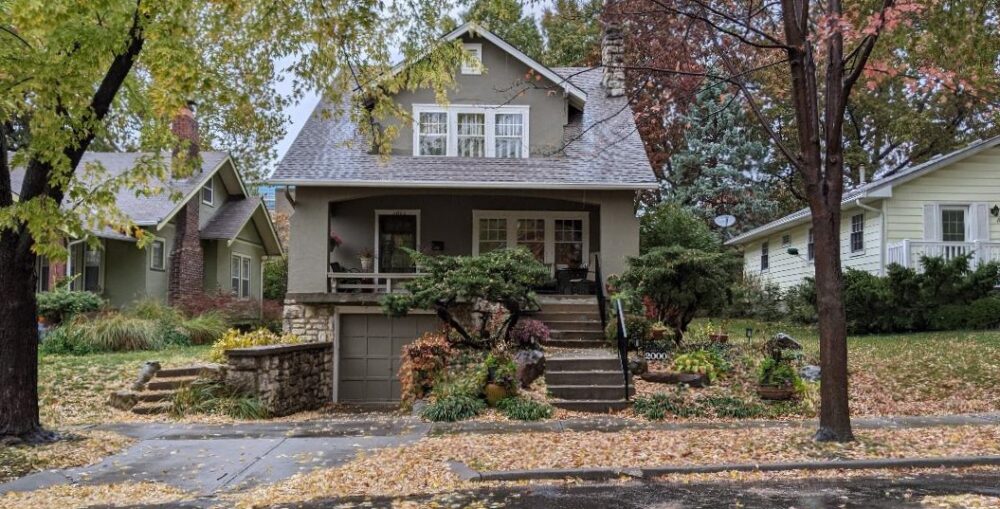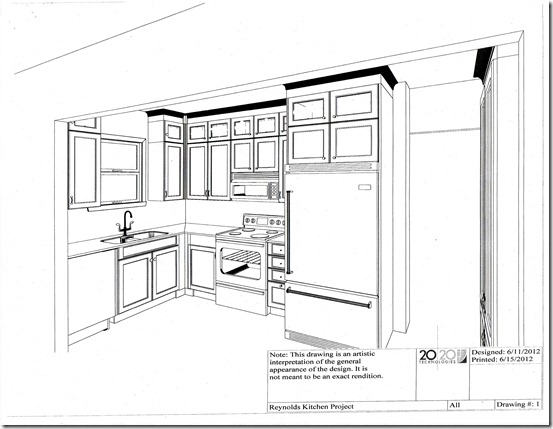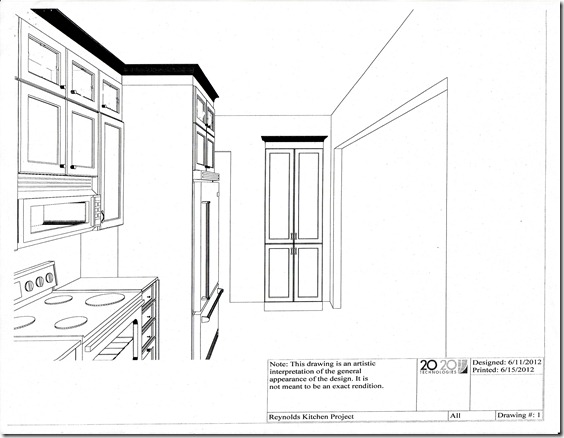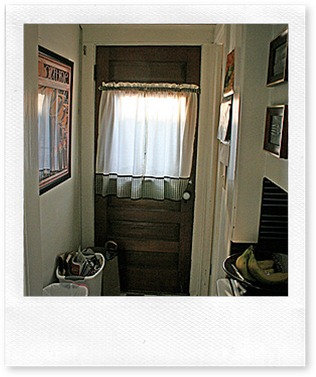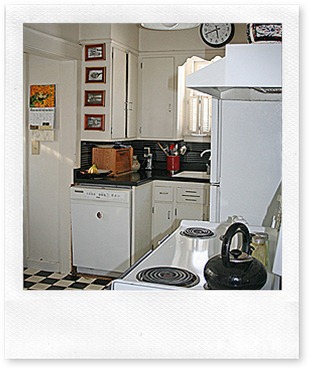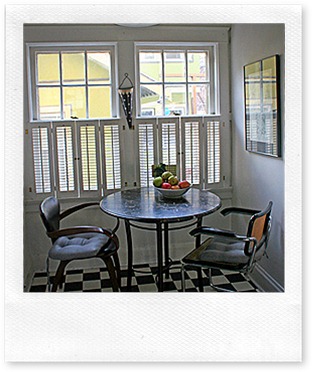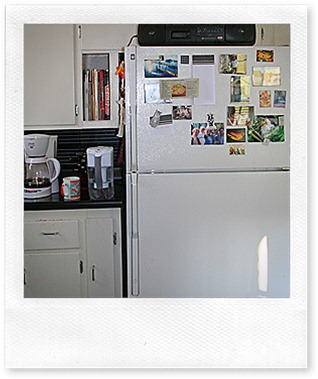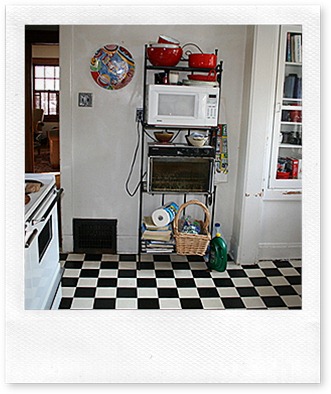After the A-List designer on Divine Design visits with the woebegone owners of her next Make-Over, she treks back to her office to critique and create.
She smiles into the camera and chats with the crowd about her choices while filling a basket with samples and swatches. When it is about full, she confidently pats the pile and announces she’s really to roll.
I can dig it.
Twenties era kitchens are often times decked out in a richly hued green, red and grey color scheme. A deep cream is a popular trim choice. In this house, a bordered linoleum (red and black) was still on the floor in the early eighties along with a red formica counter top.
Along the way, linoleum gave way to refinished maple (destroyed by a giant Airedale), and then a black and white checkered vinyl. In a bold move, a black formica counter top replaced the red.
I decide to keep the original colors but crisp ’em up. Here’s my design basket.

The walls are green and gray (green on the kitchen walls, gray in eating nook and side hall); the windows and trim are white, the cabinetry is eggshell; the floor is graphite, gray and cream marmoleum; the splashboard is glazed white subway tile; the countertop is a honed quartz that looks like a grayed marble; and the appliances are stainless steel.
Red is the accent. And I think it’s final.
